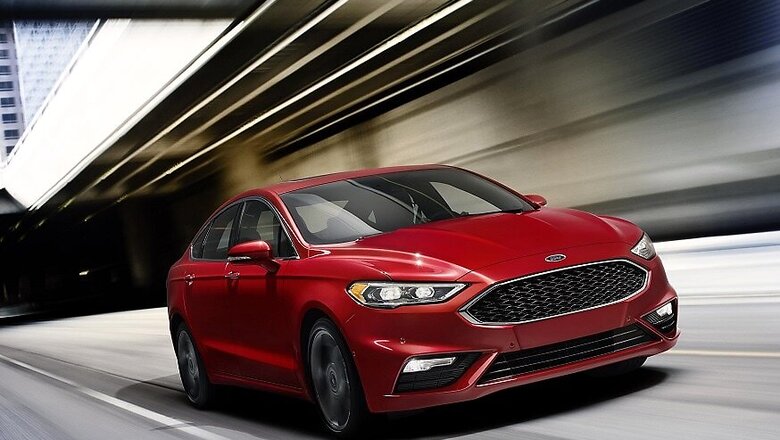
views
As part of a huge push to redefine itself as a true mobility company, rather than just a carmaker, Ford's new CEO, Jim Hackett has pledged to put connectivity at the heart of its upcoming models.
This move, outlined as the company formally announced its monthly sales performance, will see 100% of new Ford cars sold in its native US roll off the production line with integrated connectivity as standard before the end of 2019.
"Ford was built on the belief that freedom of movement drives human progress," said Hackett, "It's a belief that has always fuelled our passion to create great cars and trucks. And today, it drives our commitment to become the world's most trusted mobility company, designing smart vehicles for a smart world that help people move more safely, confidently and freely."
Connecting cars to each other, the cloud and the web is a crucial step in the journey towards true autonomous vehicles. However, in the short term, that same connectivity will enable Ford cars to be used for ridesharing and the gig economy.
In this regard, it is also aiming to make 90% of new cars it sells outside the US connected by 2020.
As well as digital trends, the company is looking to capitalize on the continuing SUV boom. It is to invest a further $7 billion in its SUV and truck business that was originally earmarked for car development. What's more, it's reallocating one-third of its budget for engine development. Money that was going to be used to further improve its gasoline powertrain lineup is now set to be invested in electric and plug-in hybrid systems instead.
Services in the spotlight
Ford is attempting to give its customers what they need and what they desire in order to remain relevant as the automobile goes through its greatest evolution in the past 100 years. And to do that, it has to look to the future rather than continue with its existing approach. "We must accept the virtues that brought us success over the past century are really no guarantee of future success," said Hackett.
However, the company also needs to increase its margins, not only to remain profitable but in order to have the necessary funds for R&D so that it can continue to innovate in terms of electrification or autonomy. And this goal -- Ford wants an average 8% margin on each car sold -- can be achieved in part by unlocking new revenue streams, such as offering paid-for services via its new cars' standard web connectivity.
And it can also reduce costs and cut delivery times by ditching unnecessary options and non-standard equipment. For example, there are around 35,000 option combinations for the current model year Fusion but that will be cut down to just 96 for the next model.
"We believe Ford will achieve its competitive advantage by focusing deeply on our customers -- whether they're drivers, riders or cities -- and that's where we are playing to win," Hackett said.
Also Watch: Maruti Suzuki Arena Showroom Walkaround Video - Cars18


















Comments
0 comment